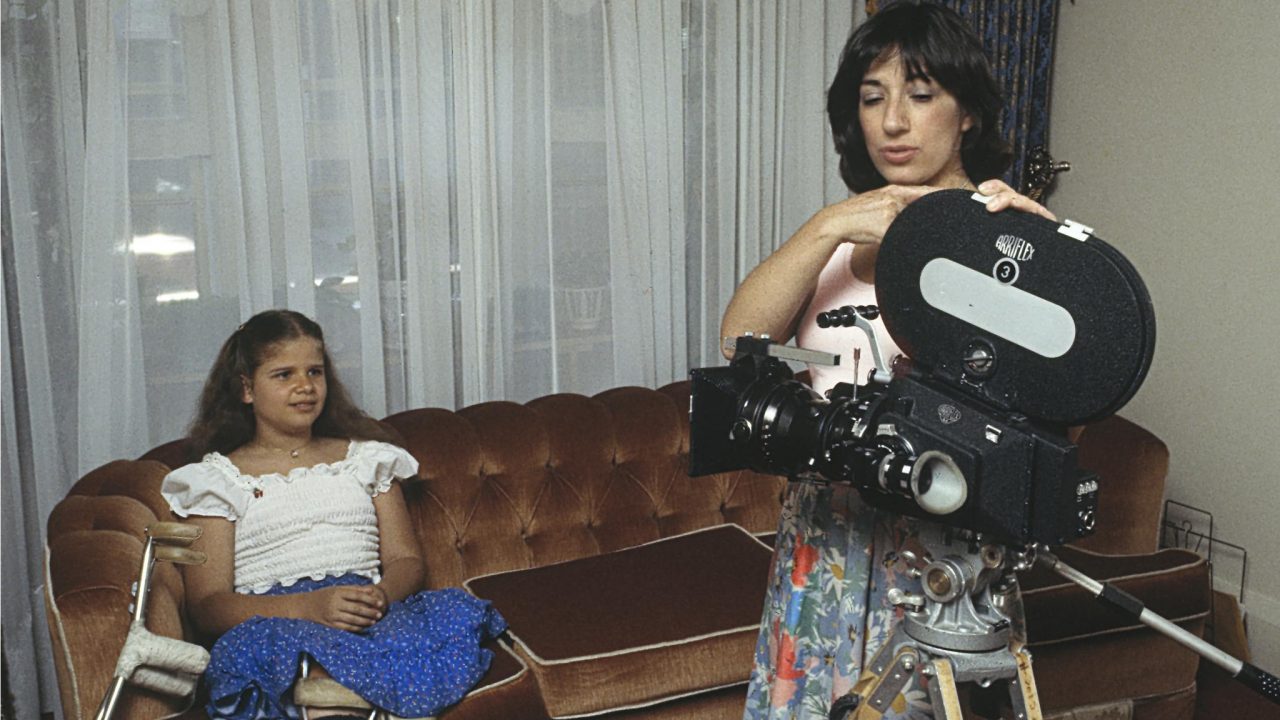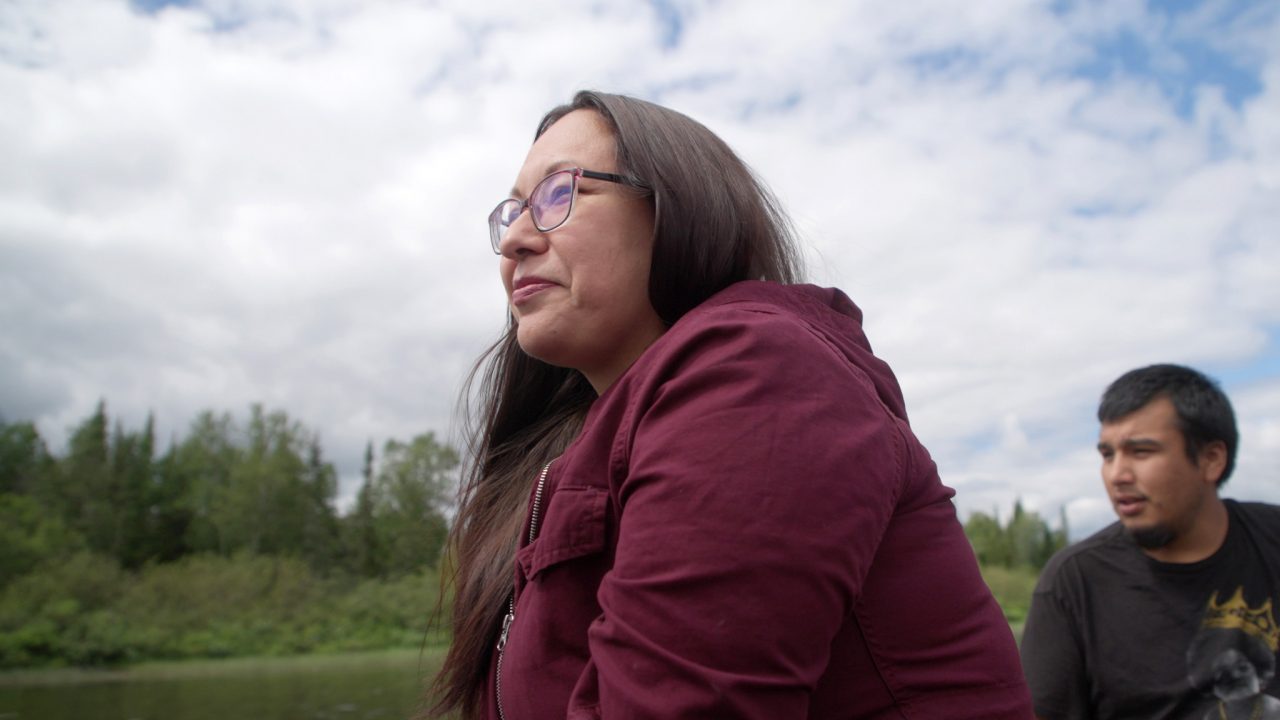
Celebrating the 50th Anniversary of Studio D’s Founding, Part 1: Kathleen Shannon and the Formative Years
Celebrating the 50th Anniversary of Studio D’s Founding, Part 1: Kathleen Shannon and the Formative Years
Created in 1974 by the NFB, Studio D released more than 220 films before shutting its doors over two decades later in 1997, the year it premiered its last two titles. This acclaimed and wide-ranging body of work—produced entirely by women—won an impressive total of more than 130 awards, including three Oscars.
To commemorate International Women’s Day, this instalment of Curator’s Perspective pays tribute to the visionary directors of the world’s first—and to this day, solely—publicly funded feminist filmmaking studio.[i] To celebrate the 50th anniversary of its founding, and thanks to a collective effort by several NFB departments to help showcase Studio D’s seminal contribution to cinema, we’ve uploaded 90 of the studio’s films, many of which were previously unreleased in digital format. You can watch all of them for free on the nfb.ca channel Studio D: The Women’s Film Studio.
Among the many films available there, the channel offers Beverly Shaffer’s I’ll Find a Way (1977), the studio’s first Oscar winner, which was made as part of its Children of Canada series. This short is about Nadia, a nine-year-old girl with spina bifida whose dream is to attend a regular school, even though she knows the other kids will tease her. Wise for her young age, Nadia simply decides that she’ll “find a way to deal with it.”
I’ll Find a Way, Beverly Shaffer, provided by the National Film Board of Canada
Since the story of the studio and its films covers such vast terrain, this blog post will be published in two parts. If you’d like to skip to the second part, click on the following link: Celebrating the 50th Anniversary of Studio D’s Founding, Part 2: Award-Winning Pioneers of Feminist Filmmaking.
Kathleen Shannon
Kathleen Shannon’s body of work represents a milestone in the history of the National Film Board of Canada. Along with Norman McLaren, Alanis Obomsawin and Willie Dunn, she is one of the most important artists who ever worked at the NFB. Her impact has extended far beyond the walls of the Board, leaving a lasting mark on Canadian cinema, and she’s been an inspirational figure for women filmmakers around the world.
Born in Vancouver in 1935, Shannon was a director, producer, performer, sound recordist, music composer, image/sound editor and scriptwriter. She has more than 270 NFB titles to her credit, including 20 as director and over 100 as producer (with two Academy Award-winning films among them: Shaffer’s I’ll Find a Way and Cynthia Scott’s 1983 film Flamenco at 5:15). Shannon received her first NFB credit at the age of 21, as an editor on the short documentary Canadian Wheat (1956) by J. Stanley Moore.
She went on to work in a number of different roles, including on the NFB classic Universe (1960) by Roman Kroitor, as well as films about Indigenous-related issues made before the “Indian Film Crew” (IFC)—the NFB’s first all-Indigenous filmmaking unit—was formed, such as D. David Hughes’ Indian Dialogue (1967) and John Gould’s Pikangikum (1967). Shannon also worked on some landmark IFC films like Tom O’Connor’s Loon Lake (1969) and Michael Kanentakeron Mitchell’s You Are on Indian Land (1969). Shannon made her directing debut in 1971 with I Don’t Think It’s Meant for Us …, added this month to NFB.ca, in which tenants of public housing express some of their concerns and views.
“I Don’t Think It’s Meant for Us …”, Kathleen Shannon, provided by the National Film Board of Canada
Three years later, she directed another film dealing with housing, Extensions of the Family (1974), about a self-selected “family of 13” who buy a house in a large western city and share responsibilities. And, a year later, she made the personal film Goldwood (1975), recently uploaded to nfb.ca. Exploring her memories of the BC mining town in which she grew up, the film combines scripted documentary with minimalist animation created by camera movement over lovely hand-drawn illustrations.
Goldwood, Kathleen Shannon, provided by the National Film Board of Canada
The A, B, Cs of Studio D: The Formative Years (1974–1976)
Right before Studio D was founded in 1974, Shannon directed and produced eight films for the Working Mothers series.[ii] The success of the series made it clear to Shannon that there was a market for films about women’s issues and, just as importantly, that there were women who were eager to direct.[iii] And it also served as a source of inspiration for the creation of Studio D. The Working Mothers series depict the perspectives and experiences of women and mothers from a variety of backgrounds and fields in the early seventies. Watched today, the films serve as a chronicle of the evolving role of women in Canadian society. In the short Mothers Are People—also recently uploaded to nfb.ca—Joy, a research biologist and widow with two school-age children, may be discussing her own dilemmas, but she’s also speaking for many other women across the country. In addition to being a form of “discrimination against women,” the absence of universal day care, according to Joy, is a loss for children, too.
Mothers Are People, Kathleen Shannon, provided by the National Film Board of Canada
Despite this remarkable career both as a director and in a variety of other filmmaking roles, Shannon is still best known for being the founder and first executive producer of Studio D.
The “D” in the studio’s name came from a tradition dating back to 1948, in which letters were assigned to identify NFB studios. In the early 1970s, NFB production was reorganized into three studios: A (Animation); B (Documentary), the famous Unit B under the direction of Tom Daly; and C (Fiction). When Shannon proposed an independent studio for women, the NFB assigned it the letter D,[iv] and on June 1, 1974,[v] Studio D was founded as part of Challenge for Change, the participatory film and video initiative created in 1967 by the NFB, which sought to include the voices of multicultural Canada. A good example is Shannon’s early Studio D/Challenge for Change short Our Dear Sisters (1975), about the great Alanis Obomsawin—a film that creatively brought together two major NFB women artists. In it, Obomsawin discusses her life, her people and her responsibilities as a single parent and the mother of an adopted child.
Our Dear Sisters, Kathleen Shannon, provided by the National Film Board of Canada
A Visionary Studio: Employment, Training and a Creative Environment for Women
In some ways, what Studio D represented for aspiring female filmmakers in the 1970s is similar to what the NFB represents today for emerging women filmmakers: an institution that hires and trains women and provides a unique space for artistic creation. In an interview with the Christian Science Monitor in 1989, Shannon described the studio’s objectives as providing employment and training opportunities for women, meeting their information needs, creating an environment that would facilitate “exploring our creativity in our own way,” and bringing the perspective of women to bear “on all social issues.”[vi]
While researching this blog post, I came across copies of the rarely seen Just-a-Minute films in our vaults. Produced by the studio in 1975, this is the first time they’re being released online.
Just-A-Minute – Part 1, Tina Horne, Candace Savage, Patricia Robertson, Joan Hutton, Mary Daemen, Sharon Madden, Margaret Pettigrew, Mary Aitkin & Terre Nash, provided by the National Film Board of Canada
These films were the result of the first filmmaker-training initiative organized by Studio D, in collaboration with the Women’s Program at the Department of the Secretary of State. This collaborative short filmmaking program (or “quilt filmmaking”) gave several Canadian women an opportunity to express themselves through the medium of a one-minute film. Using humour, caricature or animation, these short shorts highlight some of the problems and attitudes encountered by women at home and at work. They’re not only entertaining to watch but also address important issues of the day.
The Just-a-Minute series contains films by women who would become influential figures in Canadian cinema, like Terre Nash, Margaret Pettigrew and Moira Simpson. The films were made in cities across Canada (Montreal, Toronto, Ottawa, etc.) and some individual titles are credited to women film collectives, such as “Candance Savage and Friends” (Saskatoon), “Reel Feeling” (Vancouver) and “Mary Aitken and Friends” (Calgary). In short (so to speak), these 11 films embody Shannon’s goal for Studio D: to create employment and provide both training and a creative environment for women across the country. I urge you to take some time to watch these revealing short shorts; although note that parts 1 and 2 of Just-a-Minute are available to NFB.ca subscribers only and may be available on nfb.ca only until the end of this year.
Just-a-Minute – Part 2, Terre Nash, Margaret Pettigrew, Moira Simpson & Mary Aitkin, provided by the National Film Board of Canada
How They Saw Us: Recontextualizing Past Works
Another important feature of Studio D’s content that I’d like to discuss—before we jump into the second part of my blog post—is its historical focus and often critical interrogation of past NFB productions. Ann Pearson’s How They Saw Us series is an excellent example. Released in 1977, the series compiles eight films (seven of which were NFB productions) made between 1942 and 1958, including propaganda and recruitment films, and recontextualizes them by re-titling them and adding on-screen text that in part reads:
“This film has been re-released for its historic interest. The image it projects of women reflects the particular social demands and expectations of Canadian society at the time it was produced.”
How They Saw Us: Needles and Pins, for instance, revisits Roger Blais’ Needles and Pins (1955), imposing a feminist perspective that foregrounds the patriarchal and patronizing view of women which prevailed at the NFB in the 1950s. While in Pearson’s recontextualized version of the 1942 British film Women at War, an opening intertitle points out that the film “contrasts sharply with similar Canadian films by accepting women’s direct participation in the war effort as a natural outgrowth of their peacetime occupations.”
How They Saw Us: Women at War, Ann Pearson, provided by the National Film Board of Canada
Male Filmmakers at the Women’s Studio
To wrap up the first part of my broad exploration of Studio D’s history and productions, I wanted to mention that although all the films made by the studio were produced by women, five of them were directed by men.[vii] This fact very much underscores that far from taking an exclusive, limited or orthodox approach to filmmaking, Studio D was indeed a visionary initiative that was all about inclusion and diversity—as we’ll see in greater detail in the second part of this blog post.
In the meantime, have a look at one of the most famous Studio D films directed by a male filmmaker, the NFB classic Waterwalker (1984) by Bill Mason.
Waterwalker, Bill Mason, provided by the National Film Board of Canada
To read the second part of this post, click on Celebrating the 50th Anniversary of Studio D’s Founding, Part 2: Award-Winning Pioneers of Feminist Filmmaking.



